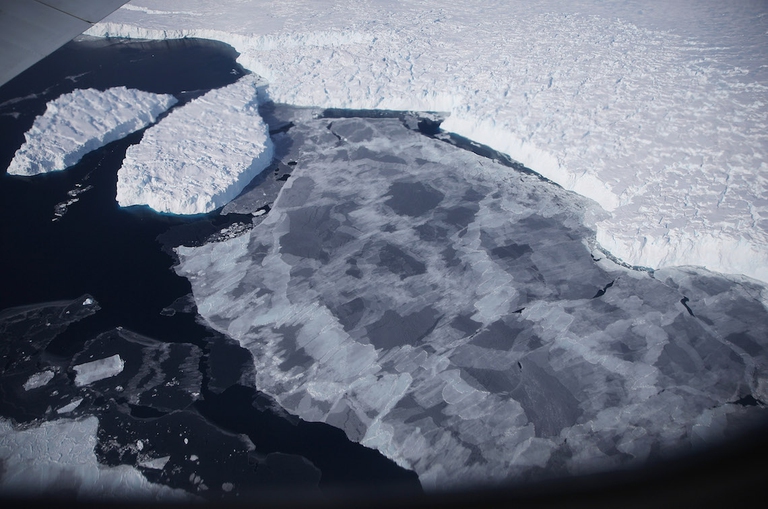
South African court dismisses a major lawsuit by 140,000 Zambian women and children against Anglo American for Kabwe lead poisoning. A setback for affected communities enduring the lasting impact of lead contamination.
A huge iceberg measuring 5,000 square kilometres, roughly the side of the US state of Delaware, is set to break off the Antarctic Peninsula. When this happens, the ice shelf Larsen C – a floating platform of ice formed by the flow of land-based glaciers or ice sheets into the ocean – located in West Antarctica will
A huge iceberg measuring 5,000 square kilometres, roughly the side of the US state of Delaware, is set to break off the Antarctic Peninsula. When this happens, the ice shelf Larsen C – a floating platform of ice formed by the flow of land-based glaciers or ice sheets into the ocean – located in West Antarctica will loose more than 10 per cent of its extension, effectively changing the map of the world as we know it.
Scientists from Project MIDAS, a UK-based Antarctic research project monitoring the effects of climate change in the area, revealed that the long-running rift in the shelf grew suddenly during the second half of December 2016. Today, only a mere 20 kilometres of ice is keeping the iceberg from floating free in the Southern Ocean: though global warming could be the cause, scientists say they don’t as of yet have evidence supporting this.
Researchers have warned that the loss of such a vast amount of ice may make Larsen C’s configuration more unstable. Previous research and experience shows that, following the break-off, Larsen C may eventually face the same destiny as its neighbours Larsen A, which collapsed in 1995, and most importantly Larsen B, which disintegrated in 2002 following a similar rift-calving episode.
“The calving of this large iceberg could be the first step of the collapse of the Larsen C ice shelf, which would result in the disintegration of a huge area of ice into a number of icebergs and smaller fragments,” glaciologist David Vaughan, Director at the British Antarctic Survey, said in a statement.
Whilst scientists are unsure about the likelihood, or speed, of the shelf’s disintegration, they warn the episode will certainly make the shelf less stable. “In the ensuing months to years we would expect further calving events, and maybe an eventual collapse – but it’s a very hard thing to predict, and our models say it will be less stable; not that it will immediately collapse,” Adrian Luckman, lead professor at Project MIDAS, told BBC News.
Being part of an ice shelf, the breaking of the iceberg wouldn’t directly cause sea levels to rise. However, scientists fear that an ice-shelf reduction of such proportion may accelerate the flow of glaciers from land towards the ocean. Should all the ice held back by Larsen C flow into the ocean, this could raise sea levels up to 10 centimetres.
A crack in Antarctica’s Larsen C Ice Shelf might create an iceberg as big as Delaware. https://t.co/oTGfu83DsS
— NASA Goddard (@NASAGoddard) December 9, 2016
Reassuringly, scientists confirm that for now this remains only a very remote possibility that could present itself in the far-away future. According to a study by Nature Climate Change, the ‘holding-back’ effect of Larsen C is only a passive one, therefore its calving wouldn’t affect ice flow from the land.
Siamo anche su WhatsApp. Segui il canale ufficiale LifeGate per restare aggiornata, aggiornato sulle ultime notizie e sulle nostre attività.
![]()
Quest'opera è distribuita con Licenza Creative Commons Attribuzione - Non commerciale - Non opere derivate 4.0 Internazionale.
South African court dismisses a major lawsuit by 140,000 Zambian women and children against Anglo American for Kabwe lead poisoning. A setback for affected communities enduring the lasting impact of lead contamination.
Controversial African land deals by Blue Carbon face skepticism regarding their environmental impact and doubts about the company’s track record, raising concerns about potential divergence from authentic environmental initiatives.
Antarctica, otherwise known as the sixth continent, recorded an increase of 70% in the rate of shrinking over the last decade (1994-2003). The thickness of ice shelves in the South Pole is thinner and thinner, and it could even halve within 200 years. The research containing the data was published by Science magazine,
Majuli, the world’s largest river island in Assam State of India is quickly disappearing into the Brahmaputra river due to soil erosion.
Food imported into the EU aren’t subject to the same production standards as European food. The introduction of mirror clauses would ensure reciprocity while also encouraging the agroecological transition.
Sikkim is a hilly State in north-east India. Surrounded by villages that attracts outsiders thanks to its soothing calmness and natural beauty.
Sikkim, one of the smallest states in India has made it mandatory for new mothers to plant saplings and protect them like their children to save environment
Chilekwa Mumba is a Zambian is an environmental activist and community organizer. He is known for having organized a successful lawsuit against UK-based mining companies.
What led to the Fukushima water release, and what are the impacts of one of the most controversial decisions of the post-nuclear disaster clean-up effort?








